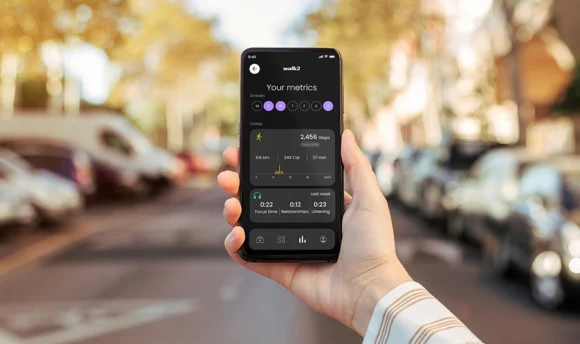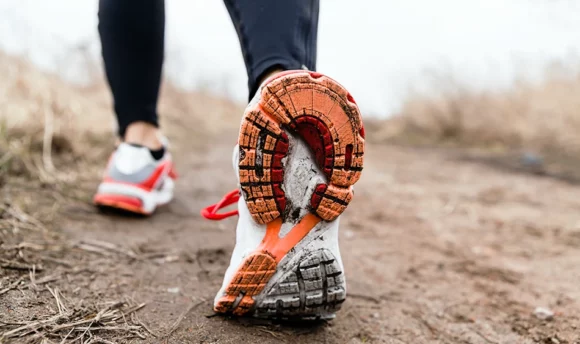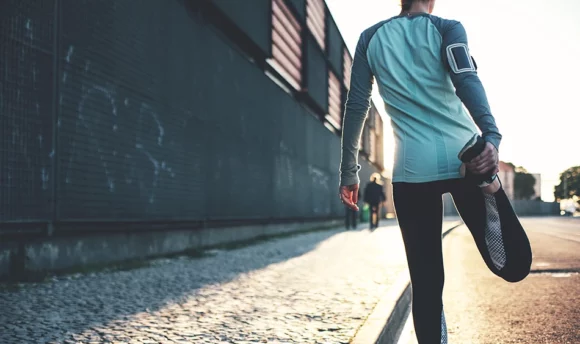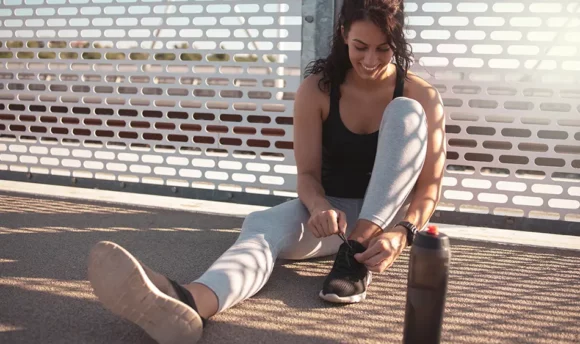What Does Running Do for Your Body? Benefits, Before and After
More than toning your legs, running can transform your body. It’s a fantastic way to improve your health and body image, provided you don’t overdo it.

When you were a kid, you ran for the simple pleasure of running. But then life happened.
It’s most runners’ story. But rediscovering running as an adult can do more than tone your leg muscles. It can give your whole body a makeover. And help you lose weight in a healthy way.
You can run for fat loss and mental health at any age. And the best part is that you can achieve your running goals while reaping all the health benefits of running.
In this article, we look at the transformative effects running has on the body. We also share some inspiring before and after running transformations.
Maybe you already have a pair of running shoes. Or maybe you’re just getting your first pair? Either way, this article will motivate you to start running. But first, let’s understand how running benefits physical and mental health.
What Does Running Do for Your Body?
Running improves your cardiovascular fitness, lowers blood pressure, promotes weight loss, boosts mood, and helps you sleep better. Running has many health benefits because it engages just about every part of your body.
You run not only with your legs but with your whole body. That makes it a great aerobic exercise. So, how does running change your body?
Reduces the risk of disease and dying and adds years to your life
The benefits of running can have a big long-term impact on your life and health. Running can make you healthier than you’ve ever been.
A 2015 study found that runners had a 30% lowered risk of all-cause mortality. It also found that runners had an up to 50% lowered risk of death from cardiovascular disease. Your body temperature may go up when you run, but your heart’s loving the workout.
What’s more, running can increase life expectancy. According to the same study, frequent recreational runners lived on average 3 years more.
In addition to preventing heart disease, running may also reduce the risk of certain cancers, including colon cancer. Female runners produce less estrogen, which can halve their risk of breast, colon, and uterine cancer.
Even 5–10 minutes of running at a slow speed can significantly reduce the risk of death and disease. When you don’t have time for a proper run, you could still hop on the treadmill. Want to live longer and be healthier? Keep up a weekly running habit.
Improves cardiovascular fitness
Running, whether it’s long distances or sprinting, is a great workout for your cardiovascular system. Running promotes a better oxygen intake. It makes your lungs and heart work hard to oxygenate all your muscles.
Regular running reduces high blood pressure and can prevent heart disease. If you have hypertension, a 2020 review article suggests that it’s best to run regularly at a moderate intensity.
Running frequently is one of the best activities for heart health. Running also leads to increased blood flow to the brain, according to a 2021 study.
When you run, blood vessels in the muscles dilate, improving blood flow and possibly preventing blood clots. More blood volume passes through your veins and arteries than at rest. This means a big boost to your cardiovascular health.
Improves mood and wards off depression
The benefits of running extend to mental health as well. Running releases endorphins and endocannabinoids that make you feel good during and after the run. The feeling may last quite a while.
It’s known as runner’s high, and it’s one of the many reasons people put on running shoes. And it can motivate you to keep logging those miles.
But running can do more than improve mood. Other mental health benefits of running include improvement in depression and anxiety symptoms.
Running, like other forms of exercise, can also have an antidepressant effect. It makes it easier for your body to cope with physical or emotional stress.
The effect can be even more powerful if you run in nature. Few activities can ward off the blues better than a trail run.
Creates new brain cells
You may be running mostly with your legs, but your whole body benefits from regular running, the brain included.
Research suggests that running encourages the growth of new neurons. After only a few days of running, participants in a study developed hundreds of thousands of fresh brain cells.
This improved their working memory and learning. It may also help slow the cognitive decline that happens naturally with old age. Although it’s best to start running young, it’s never too late to put on a pair of running shoes.
What’s more, running may sharpen your focus and improve your ability to switch between tasks. People who regularly run have a bigger hippocampus than sedentary people.
Improves bone density
You may have heard that running puts more stress on your bones than walking or other activities. That’s true. If you run too much, you may experience knee pain, shin splints, and other stress injuries.
New runners often push themselves too hard. Novice runners have a higher risk of injury than experienced runners. Marathon runners or female runners can be especially at risk.
However, if you don’t overtrain, running can actually make your bones stronger. A 2019 study found that long-distance running improved bone density. Running trains not only your muscles but also your bones and joints. In moderation, it can strengthen them.
Improves insulin sensitivity
Research indicates that sprint interval training improves insulin sensitivity. According to a review article, people with diabetes may benefit more from high-intensity short runs than long jogs.
Running also helps manage diabetes indirectly by facilitating weight loss. According to the same source mentioned above, losing weight can improve insulin resistance.
Running can also make it easier for people with type 2 diabetes to maintain healthy lifestyle changes. It boosts mood and supports healthy psychological functioning. By doing so, it can make diabetes management feel less challenging.
Improves sleep quality
Trouble falling asleep? Running at a moderate intensity can significantly improve sleep quality. However, it’s best to avoid intense exercise before bedtime as it may keep you up.
Run regularly in the sun for better sleep. A 2014 study found that sun exposure helps with better sleep. It does this by improving hormonal responses and supporting the normal functioning of the body’s internal clock.
Running in the sun also gives you a healthy dose of vitamin D. This vitamin plays a key role in the proper functioning of the immune system. It also helps make your bones strong.
Morning runs on clear days are great to max your vitamin D intake. They also help you maintain a safe body temperature during hotter days.
Improves sex life
If you’d rather stay up late and make love than sleep, running regularly is still a great idea. Running energizes people who often feel tired, a 2008 study on young adults found.
It also improves your body image by helping you tone your body and maintain a healthy body weight. And that’s not all.
Running boosts testosterone levels in men. Also, it improves blood flow and circulation, keeping your blood vessels clear. This can mean longer erections. Meanwhile, female runners experience improved sexual arousal and positive mood.
Works just about all muscles
Long-distance running is a total aerobic workout for your body. It tones primarily the thighs, calf muscles, and glutes. But it engages just about every other muscle in your body.
To engage your core muscles even more, integrate sprints and high-intensity interval training into your workouts. Add hill runs to your running plan to give your calf muscles, glutes, quads, and hamstrings an even tougher workout.
The heart itself is a muscle, and running is one of the best ways to exercise it. While you have your running shoes on, your heart will keep on pumping blood through your muscles to keep you going.
Builds endurance and stamina
The stress that running puts on your cardiovascular system increases your endurance. You can take the endurance you build running into other sports and activities.
For example, if you love football, running regularly could help you run more on the field. Endurance running can also increase your stamina. Stamina is the ability to sustain physical or mental effort for a long period.
Marathon training, in particular, can do wonders for your stamina. At the same time, it can help you build mental fortitude.
After all, marathons are not run only with the feet but also with the mind. To finish a marathon with a good time, you need more than strong legs. You need a strong mind.
Promotes weight loss
Regular running can alter your body composition. It helps you lose fat from the entire body. This includes unhealthy fat from problem areas like the belly.
But how does running promote weight loss exactly? Regular running makes your body burn more calories than walking. It alters your body’s energy expenditure.
If you run every week enough to burn more calories than you eat, you achieve a calorie deficit. Your body will start burning fat reserves to power you up during runs. And so, you lose weight.
What’s more, your body will continue to burn calories at a faster rate after an intense run. This metabolic change can facilitate healthy weight loss. It’s one of the best reasons to grab your running shoes.
Regular running isn’t a magic bullet to burning fat. Other factors come into play. These include what and how often you eat, your lifestyle, sleep quality, and more.
But running is one of the best ways to shed extra pounds. And maintain a healthy body weight. With that comes a better body image and a self-confidence boost.
If you don’t know where to start, you can try Joggo’s full-personalized running app.
Joggo is a running training app that can help you manage your weight and reach your running goals. Like a running coach that’s always at hand, it features personalized training and meal plans, smart tips, and more. Check it out if you haven’t already.

- Personalized running plans created by professional coaches
- Meal plans perfectly tailored to your current diet, allergies, and health needs
- Treadmill mode for people preferring indoor running
- Educational articles on easier running, injury prevention, nutrition, and more
- Behavior science-based reward system for lasting motivation
What Muscles Does Running Tone?
Running tones mostly your leg and butt muscles. To a lesser extent, it also tones your abdominal muscles. It does this by increasing lean muscle while decreasing body fat.
As a form of aerobic exercise, running engages almost all muscle groups. Even your arms play their part. When you run, your arms help counterbalance the momentum of your legs.
Let’s take a closer look at the key muscles that make running possible.
- Quadriceps – Or quads for short, these are the muscles at the front of the thighs. They play a key role at the beginning of the stride. The quads extend the knee and bend the hip, helping propel you forward. The quads absorb the impact on your foot at landing and help stabilize you.
- Calves – The calf muscles include the gastrocnemius and soleus. When you run, these muscles provide the push that propels you forward. Running at a fast pace activates them more often than walking.
- Hamstrings – Located at the back of the thighs, the hamstrings contract when your foot strikes the ground, pulling you forward. They then contract again to lift your heel before you swing your knee during the stride.
- Glutes – The glutes are your butt muscles. They hold your pelvis stable while running. They also help extend the hip. The glutes contribute to the power and speed of your stride. Fast runners have strong glutes.
Important: Since it works mostly on your lower body muscles, running can lead to muscle imbalance. That’s why sports medicine experts often recommend adding other workouts to your training plan.
Differences Between a Runner’s Body vs. Gym Body
Runners’ bodies tend to be flat and lean. This helps them move with ease and run fast. People who do weight training, by contrast, have thick and muscular bodies. They focus on building muscle mass.
Wondering how running changes specific parts of your body? Let’s zoom in on how running changes some key muscle groups.
Leaner legs
Running tones the leg muscles. But it doesn’t give them the ripped effect that people who do front squats or deadlifts have. Endurance runners, in particular, work mostly on their slow-twitch muscles. People training at the gym rely more on fast-twitch muscles.
The same is true for sprinters. You may have noticed the difference in physique between long-distance runners and sprinters. The former is lean with a low percentage of body fat. The latter is more muscular.
Firmer butt
When you run on a calorie deficit, you burn fat from all parts of your body. This includes the butt. The result of all this physical activity can be a leaner butt.
Running won’t make your butt bigger, though. Gym goers who train their glutes have bigger buttocks than runners. Good exercises for the glutes include glute bridges, clamshells, and jumping squats.
Flatter abs
While running does engage the abs, long-distance runners have lean, sinewy abs. Marathon runners don’t have the kind of strongly defined abs that bodybuilders do. Longer distances deplete energy reserves and may eat into muscle mass.
When the abs are concerned, serious runners and bodybuilders have one thing in common, though. Neither of them has pot bellies!
Narrower chest
Running promotes an upright posture but may make your chest seem smaller. This is more likely to happen if you run a lot while taking in fewer calories.
Running will not shrink your breasts. But it could make your chest look slightly flatter. At the gym, pushups or bench presses work the pectorals. They give them bulk and make the chest look broader.
To get a more defined chest as a runner, add some strength training to your running program. Even simple bodyweight exercises like pushups help tone your chest.
Slimmer arms
Running is an effective form of aerobic exercise that can help you burn calories and body fat. Running, you’re burning fat from your whole body, arms included.
If you follow a running routine, your arms will also get slimmer. To burn more fat while running and tone your arms, swing them vigorously. This makes the arm muscles work harder.
Overall, running has a slimming effect on your entire body. This is especially true of endurance running. If you don’t feed your body enough calories, running may eat into your muscles.
Running Transformation/Before and After
Running can transform your body. It doesn’t happen overnight. And diet definitely plays a part. You won’t be toning your body with running if you take in more calories than you burn. You need to maintain a caloric deficit.
But if you stick to your running goals and eat well, the results can be nothing less than spectacular. You won’t just lose weight. You’ll tone your muscles. Just look at these amazing runner transformations:

Running legs before and after
Even if you don’t need to shed dozens of pounds, running can help you sculpt your legs. Running tones your leg muscles and adds bulk to them.
When you run, you trade extra fat for muscle. You’ll also notice the improved vascularization in the color of the skin.
Here are some inspiring images of running legs before and after the miles started to add up. See how running changes the legs?
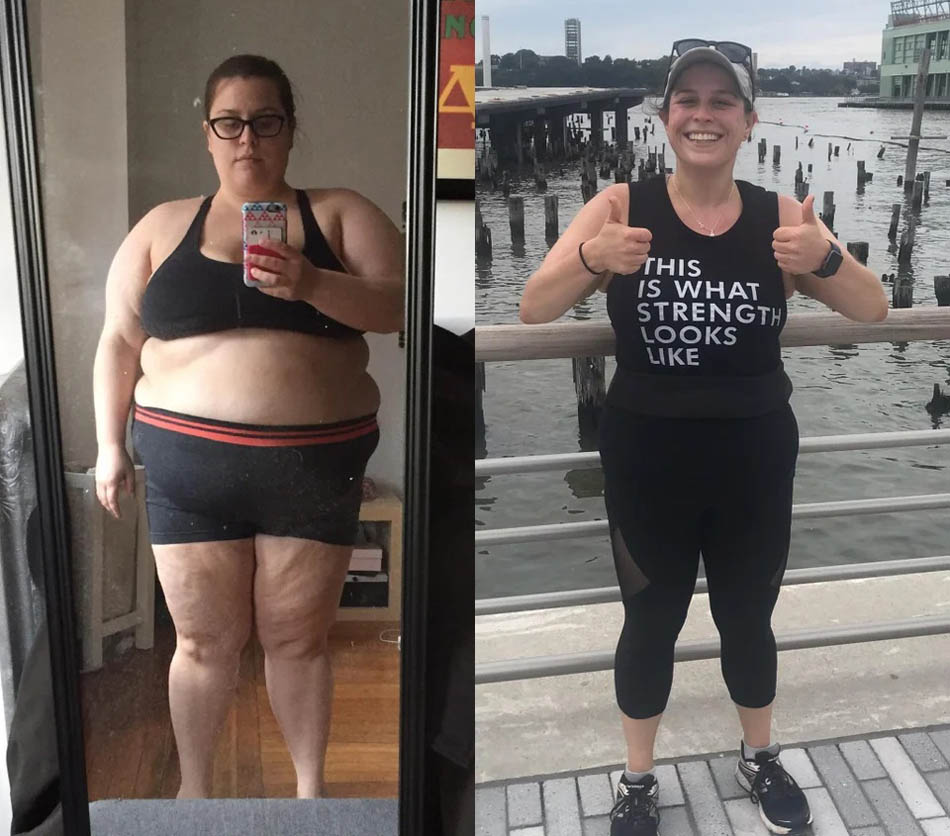
A Word About Your Running Progress
Aiming for big results is great. But don’t push yourself too hard too soon. If your running progress looks like this…
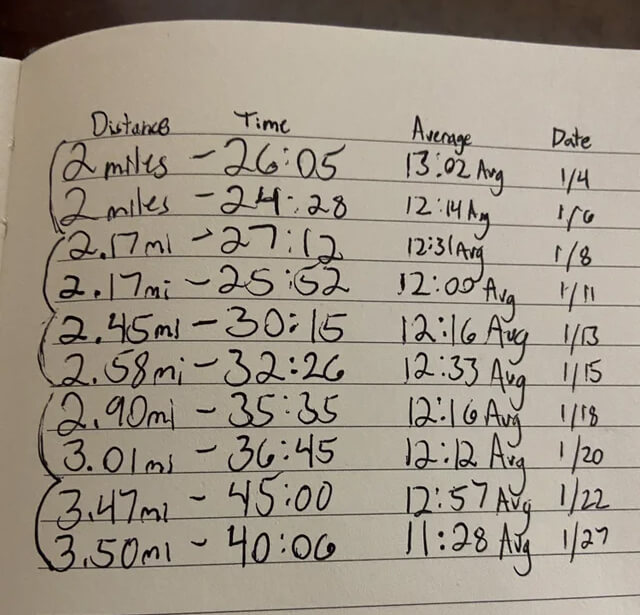
Then keeping adding miles from one run to the next might get you sidelined before long. Starting to run can be exciting. But take it slowly.
If you ramp up the mileage too quickly, you risk stress fractures and other injuries. Remember that running is a weight-bearing exercise. It’s something many novice runners learn the hard way. And it hurts!
A supplement for runners can help you maximize results while avoiding injury. They support all stages of running, promoting performance, hydration, and recovery.
FAQs
Running helps tone your calves, thighs, and butt. Sprinting will help you get more defined leg muscles than running over longer distances.
Running relies on your gluteal or butt muscles and will make them stronger. That said, endurance running won’t make your butt bigger. For that, you need to specifically train your glutes using weights.
Sprinters have a higher muscle mass with bigger, more pronounced muscles. Sprinters rely more on fast-twitch muscle fibers. Marathoners, by contrast, rely more on slow-twitch muscle fibers and are slimmer.
Running may tone a woman’s thighs more than a man’s. It may also make the butt appear firmer. This happens because women carry more fatty tissue in their buttocks and thighs.
A Word From Our Coach
The first day you start running, you leave your old self behind. With each new step you make, you become a more motivated and fitter you. The physical and mental benefits of running are undeniable.
But remember that results don’t come overnight. Push yourself too hard, and you’ll end up with joint pain, stress fractures, and a bad feeling about it all.
Set a running goal and increase your mileage gradually. A safe approach is to follow the 10% rule. Every two weeks, up your weekly mileage by 10%.
Following a personalized running plan can help you achieve your running goals without injuries. Track and share your progress every step of the way for a sense of accomplishment.
Run with others if you can. Running with a friend or coworkers can make regular running easier and more fun. Consider also joining a local running club.
In the end, remember that transforming your body by running comes from within. The outer transformation is only a reflection of the great feeling you’ll get running.
So, what are you waiting for? Grab your running shoes and start pounding that trail. Only remember to stop and rest. Good runners know not only how to run but also how to rest.
Key Takeaways
Before you lace your running shoes, here are the key things to remember:
- Running transforms not only your legs but your entire body.
- It’s a terrific way to get shapely calves and thighs and become slimmer overall.
- But running isn’t going to tone your abs, butt, or arms the way weight training will.
- Running right and following a healthy diet can help you shed extra pounds and replace unwanted fat with muscle.
- Running can make you feel great and add years to your life.
- It’s not just a pleasant physical activity, but one of the best things you can do for your body.
Now that you know how running changes your body, no more excuses. Run!

















































 Select your language:
Select your language: 





